Best
Overall
Professional
Cello
-
Overall: 4/4-size professional cello made from solid tonewoods
-
Best Feature: Set up with Larsen A+D strings and Spirocore Chrome G+C strings
-
TedScore™: 9/10
Best
Overall
Professional
Violin
-
Overall: Patterned after a 1741 instrument by Italian luthier Bartolomeo Giuseppe Guarneri
-
Best Feature: Handcrafted from air-dried, oldest-stock, AAA Alpine spruce and European maple
-
TedScore™: 9.5/10
Best
Overall
Professional
Viola
Doetsch Professional
Viola Outfit The Ultimate Professional Viola Outfit
-
Overall: Eastman’s renowned Rudoulf Doetsch instruments
-
Best Feature: Expert craftsmanship and meticulously chosen German tonewoods
-
TedScore™:
8.9/10
I’ve got to say, as a violinist in an orchestra, the string instruments are like the rockstars of the classical world. They have the power to pull at those heartstrings, making sure every melody and harmony hits you right in the feels.
Aside from the famous violins, you might be wondering what are the other string instruments in an orchestra.
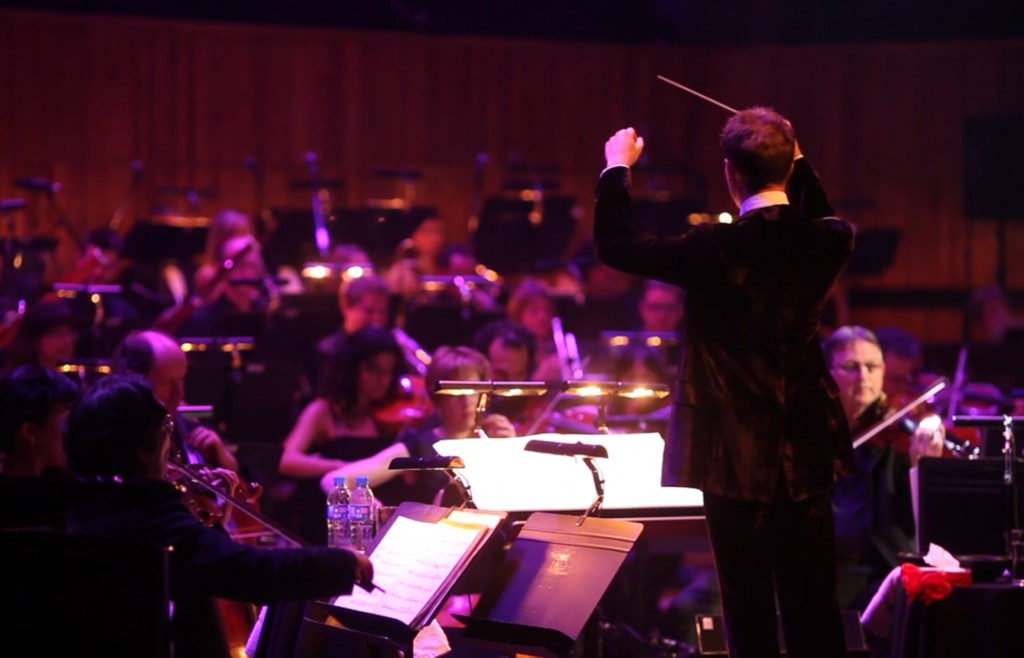
With all the whipping bows that move in unison but are still chaotic, the players’ moving heads with each passing note played, not to mention the conductor’s dance moves.
It’s not easy to know exactly what string instrument is present. But I’ll happily introduce you to the different companions of my violin in an orchestra.
Types of String Instruments in an Orchestra
Welcome to the string section!
When I think of string instruments in an orchestra, I often imagine the elegant silhouettes of violins, violas, cellos, and double basses lined up in gentle arcs across the stage.
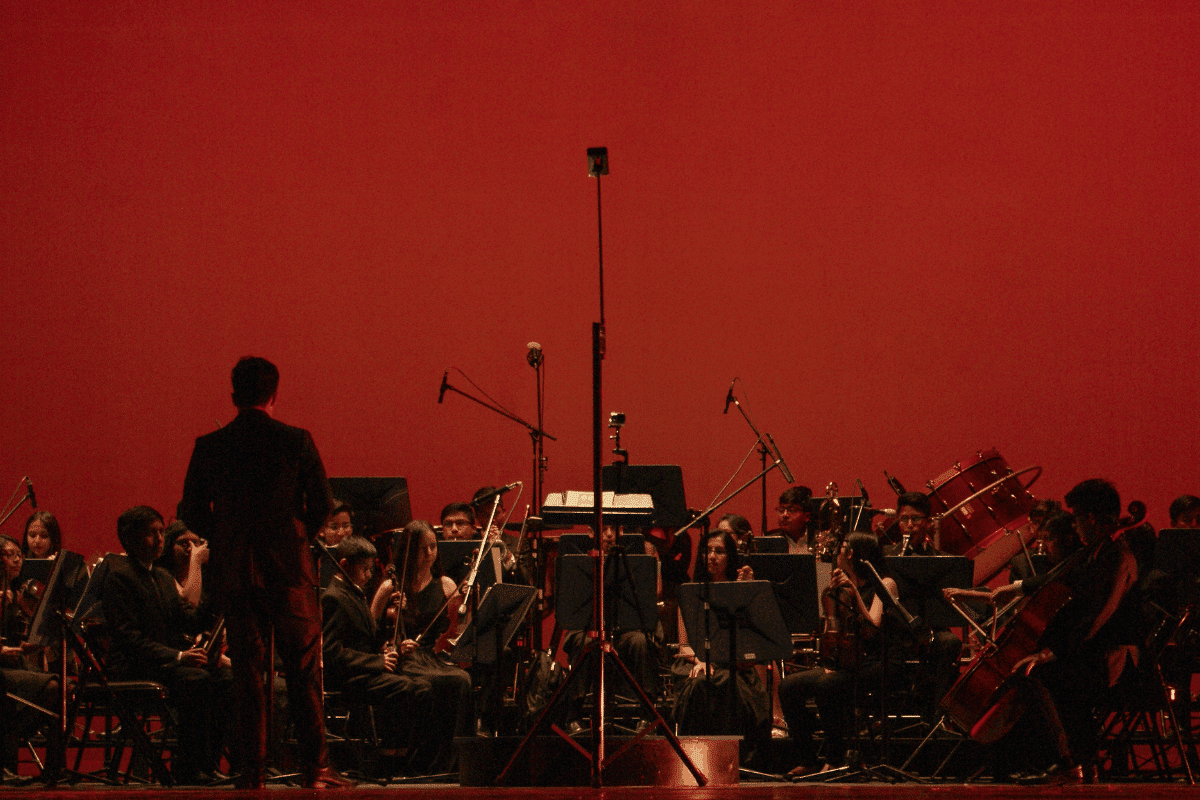
From the highest, delicate notes of the violin to the deep tones of the double bass, each string instrument has its unique voice that contributes to the orchestra’s collective sound.
Lucky for you, I’m here to guide you through each string family member responsible and other instrument, for making up this powerful sound and harmonious ensemble.
Violins
I just love the violins, and the first violinist is often called the leader of the orchestra!
They’re divided into first violins, which typically carry the melody, and second violins, playing harmony or counterpoints.
Each violinist deftly draws their bow across four strings, creating soar-high pitches above the rest – they are proud of being the highest-pitched member of the family.
With their bright, expressive sounds, it’s no wonder they often bask in the spotlight.
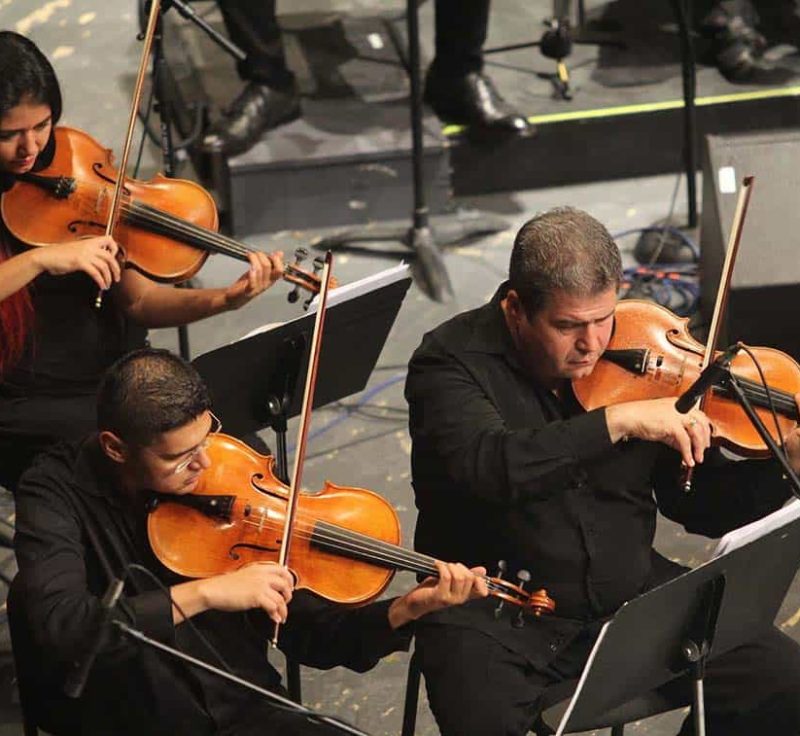
Hofner H225 Series Guarneri Professional Violin

FEATURES: Patterned after a 1741 instrument by Italian luthier Bartolomeo Giuseppe Guarneri
OTHER INFO: Handcrafted from air-dried, oldest-stock, AAA Alpine spruce and European maple
- Ebony Parisian eye end button and pegs
- Despiau ''A''-level French bridge
- Ebony tailpiece with E tuner
- Guarneri-model ebony chinrest
- Expensive
When you click ‘Check Price’, you’ll see there are loads of great places to buy this item. Our personal favorite is Sweetwater for the US, and Thomann and Gear4Music for the UK & Europe.
They are the largest music retailers, with excellent customer service, competitive prices, really fast shipping, and the longest guarantees.
The professional musician who wrote this article combined many things,
from the product build, manufacturer’s reputation through to feedback
from other users, to create our famous TedScore™.
Violas
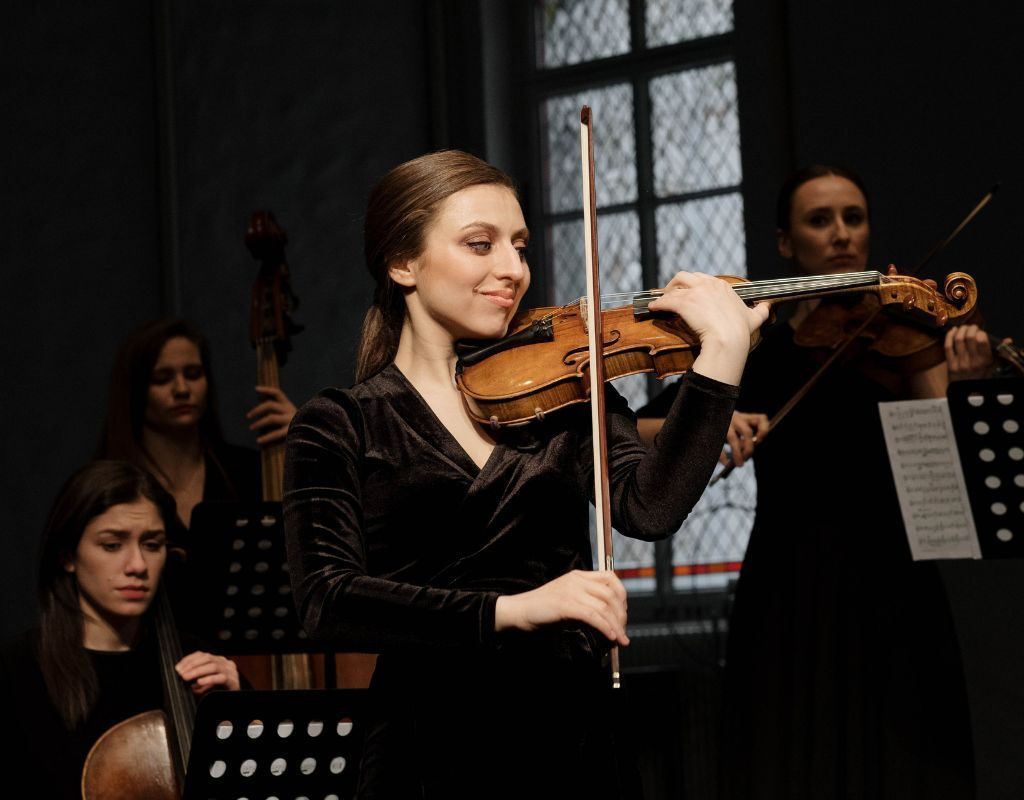
Ah, the violas, the rich-toned middle children of the string family!
They hold a special place in my heart with their warm alto voices, a shade lower and fuller than a violin. They are like the altos in a choir; they are not the melody singers, but they do add beautiful harmony to the piece.
A violist will cradle their instrument on the left shoulder, just like violinists, but with a slightly larger body to enhance that deep expressiveness we cherish.
Eastman VA701 Rudoulf Doetsch Professional Viola Outfit

FEATURES: Eastman’s renowned Rudoulf Doetsch instruments
OTHER INFO: Expert craftsmanship and meticulously chosen German tonewoods
- Constructed from German spruce and maple and coated with a multilayer spirit varnish
- Comes with high-quality accessories such as Pisastro Obligato strings, an Andreas Select Pernambuco Bow, and a top-tier oblong viola case
- None!
When you click ‘Check Price’, you’ll see there are loads of great places to buy this item. Our personal favorite is Sweetwater for the US, and Thomann and Gear4Music for the UK & Europe.
They are the largest music retailers, with excellent customer service, competitive prices, really fast shipping, and the longest guarantees.
The professional musician who wrote this article combined many things,
from the product build, manufacturer’s reputation through to feedback
from other users, to create our famous TedScore™.
Cellos
Move over to the cellos, those robust and soul-stirring beauties (they are melancholic drama queens, if you know what I mean)!
These instruments rest majestically between the knees of cellists, boasting four strings tuned to pitches that truly sing.
They bring a rich tonal depth to the table, capable of both deep, powerful bass lines and heart-melting melodies.
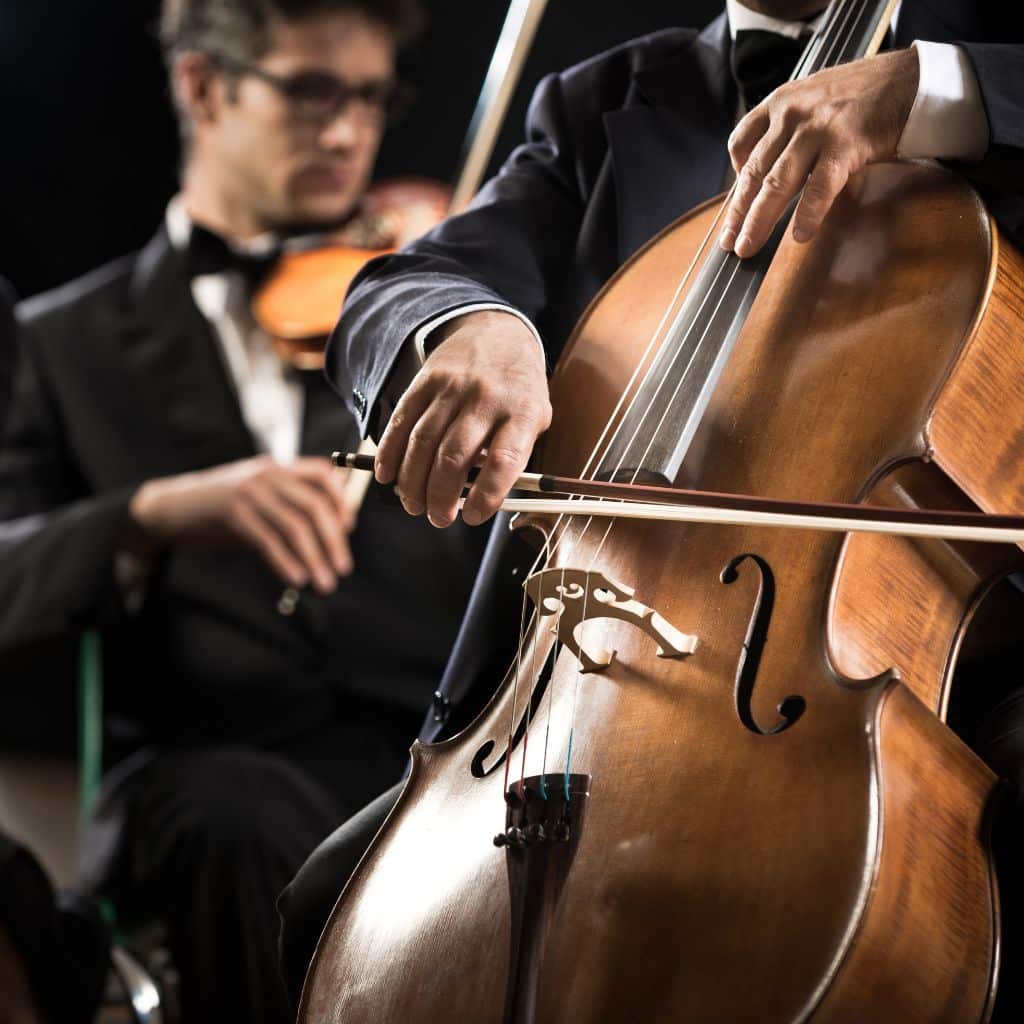
Eastman VC928 Raúl Emiliani Professional Cello
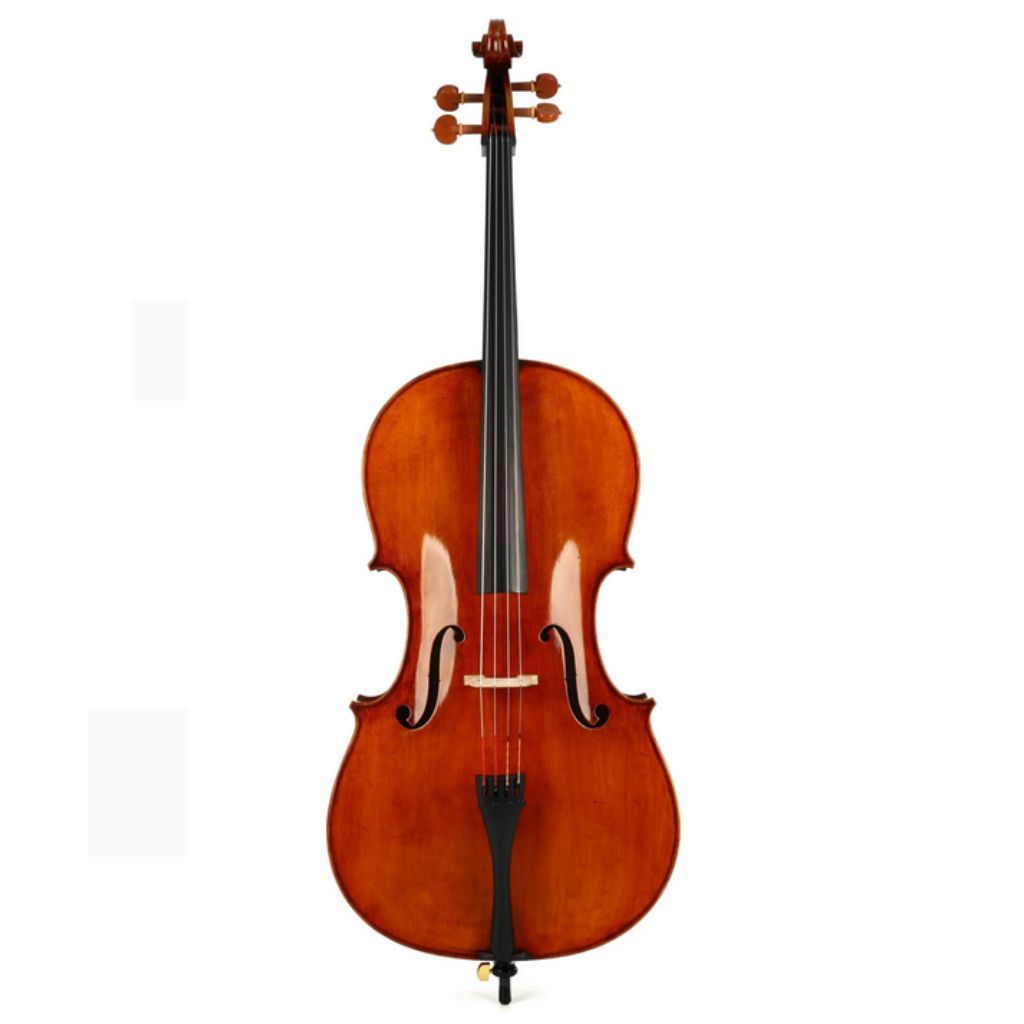
FEATURES: 4/4-size professional cello made from solid tonewoods
OTHER INFO: Set up with Larsen A+D strings and Spirocore Chrome G+C strings
- Hand-carved spruce top with maple back and ribs for exceptional tone and playability
- Wittner composite tailpiece equipped with fine tuners
- Ebony fingerboard with boxwood pegs
- Hand-applied oil varnish for enhanced detail and beauty
- Very Expensive!
When you click ‘Check Price’, you’ll see there are loads of great places to buy this item. Our personal favorite is Sweetwater for the US, and Thomann and Gear4Music for the UK & Europe.
They are the largest music retailers, with excellent customer service, competitive prices, really fast shipping, and the longest guarantees.
The professional musician who wrote this article combined many things,
from the product build, manufacturer’s reputation through to feedback
from other users, to create our famous TedScore™.
Double Basses
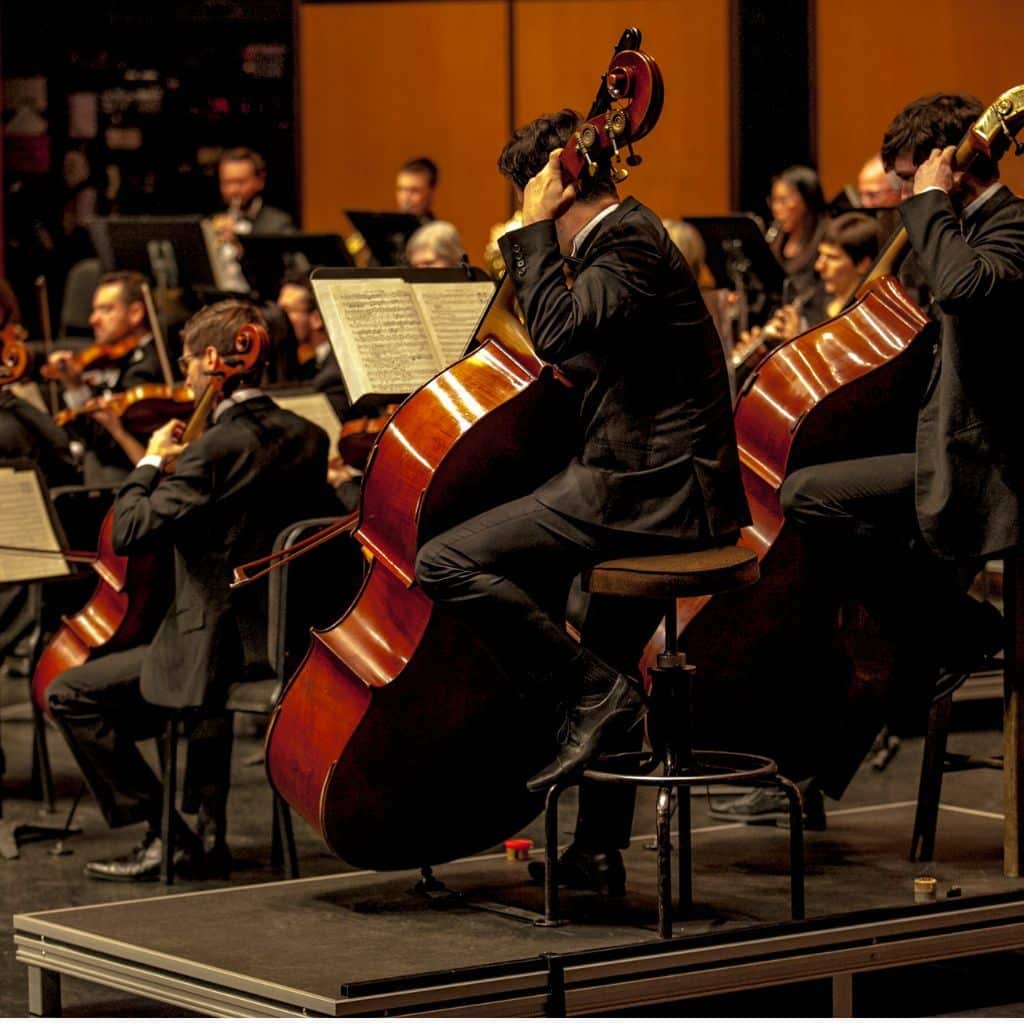
Now, let’s chat about the double basses, or contrabasses, standing tall and proud.
These giants are the foundation of the orchestra’s sound, offering the lowest pitches achievable in the string section.
Double bass players will often pluck the strings or use a bow to lay down the bass lines, anchoring the music like a sturdy upright bass.
Double bass are like unsung heroes; they’re not in the spotlight, but boy, they give a solid foundation to the whole orchestra.
Eastman Master Series VB605 Professional Double Bass
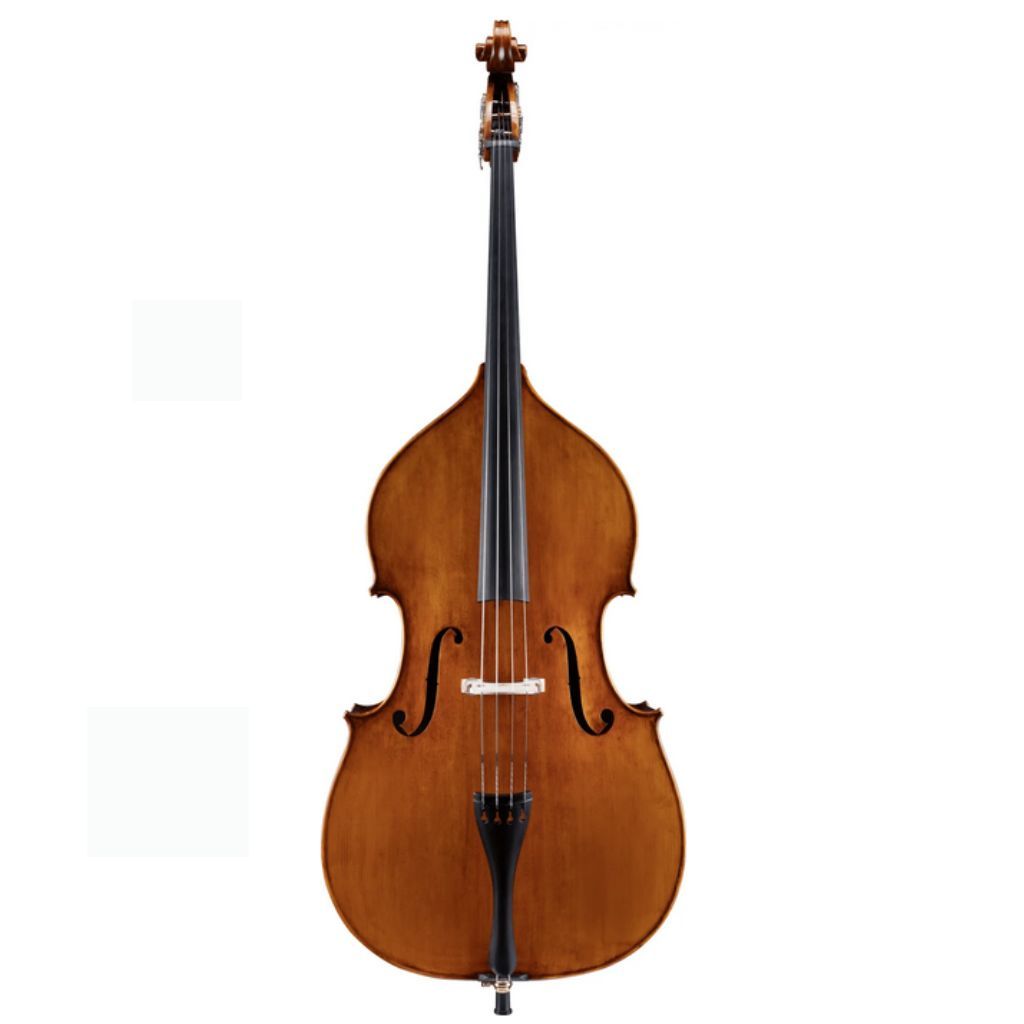
FEATURES: Made from European tonewoods which have been aged for enhanced tonality and resonance
OTHER INFO: Set up with D’Addario Kaplan strings
- 3/4-size upright bass with Violin corners
- Hand-carved spruce top with flamed maple back and ribs
- Ebony fingerboard and tailpiece
- Rubner brass tuning machines
- Expensive
When you click ‘Check Price’, you’ll see there are loads of great places to buy this item. Our personal favorite is Sweetwater for the US, and Thomann and Gear4Music for the UK & Europe.
They are the largest music retailers, with excellent customer service, competitive prices, really fast shipping, and the longest guarantees.
The professional musician who wrote this article combined many things,
from the product build, manufacturer’s reputation through to feedback
from other users, to create our famous TedScore™.
Harps
Last but certainly not least, I never tire of the sight and sound of the harp – the angelic sound-producing instrument.
With its gracefully curved frame, this solo instrument has pedals for changing pitches and nylon strings plucked by delicate fingers—the ones responsible for its mellow sound.
The harpist adds a sprinkle of magic and a touch of elegance and is always a feast for both the ears and the eyes.
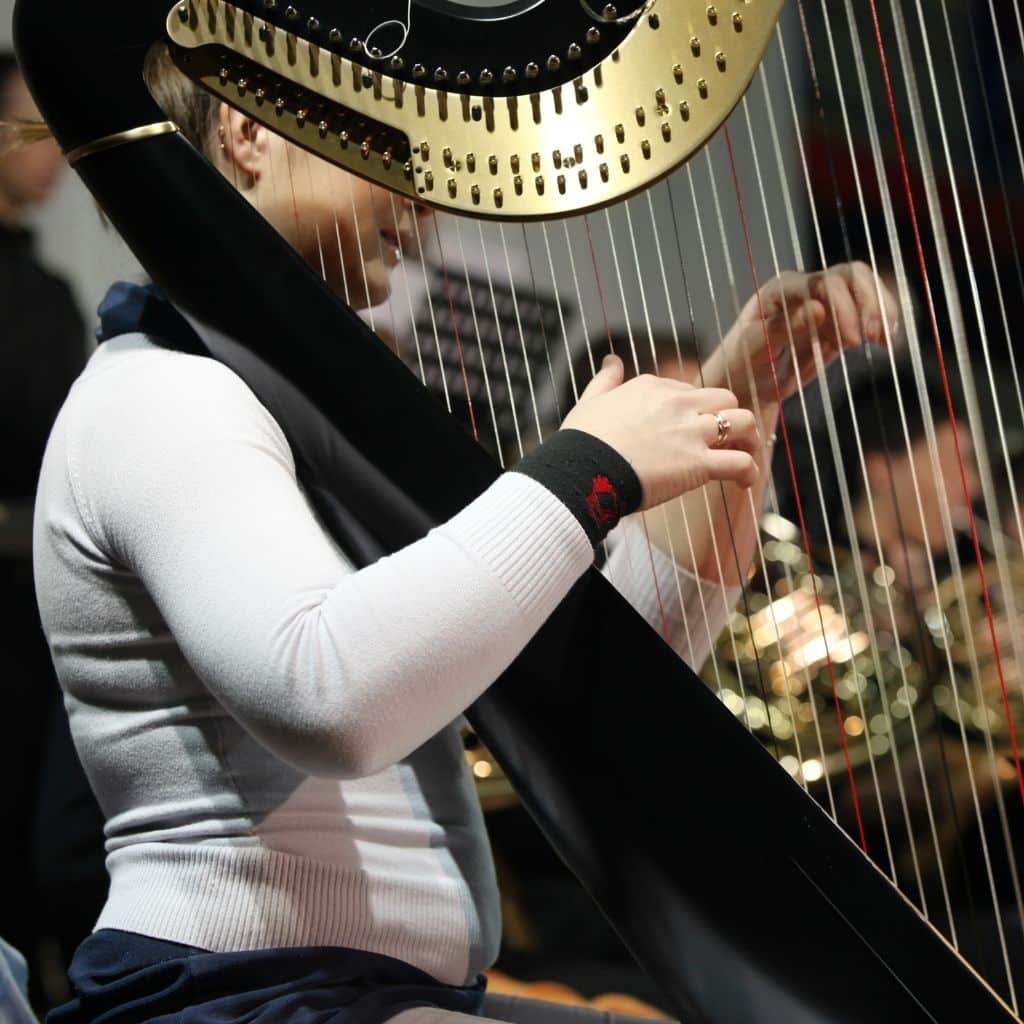
Deluxe 38 String Pillar Harp by Gear4music
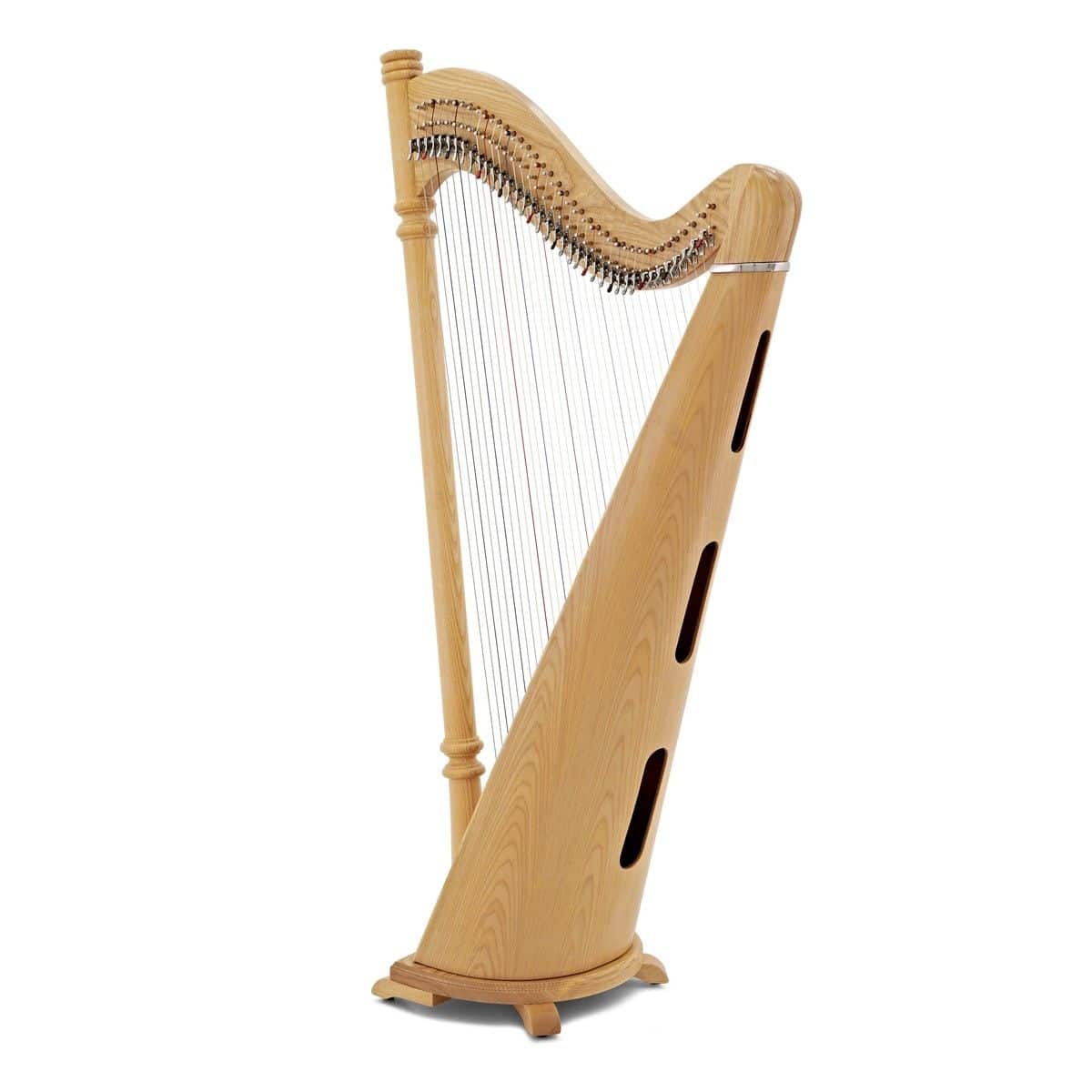
FEATURES: Contemporary design and beech wood body
OTHER INFO: Solid pillar for increased sound and resonance
- large sound chamber and hand-carved supporting pillar, creating a resonant sound
- Made from a fine selection of beech, ash, and spruce woods
- Includes carry bag, tuning levers, and strings
- None!
When you click ‘Check Price’, you’ll see there are loads of great places to buy this item. Our personal favorite is Sweetwater for the US, and Thomann and Gear4Music for the UK & Europe.
They are the largest music retailers, with excellent customer service, competitive prices, really fast shipping, and the longest guarantees.
The professional musician who wrote this article combined many things,
from the product build, manufacturer’s reputation through to feedback
from other users, to create our famous TedScore™.
Roles Within the Orchestra
Aside from knowing the members of the string family, let me tell you how violins, violas, cellos, and double basses contribute to the symphonic tapestry.
I really find it amazing that these different instruments, with different keys and sounds, produce such beautiful showpieces!
Solo and Accompaniment
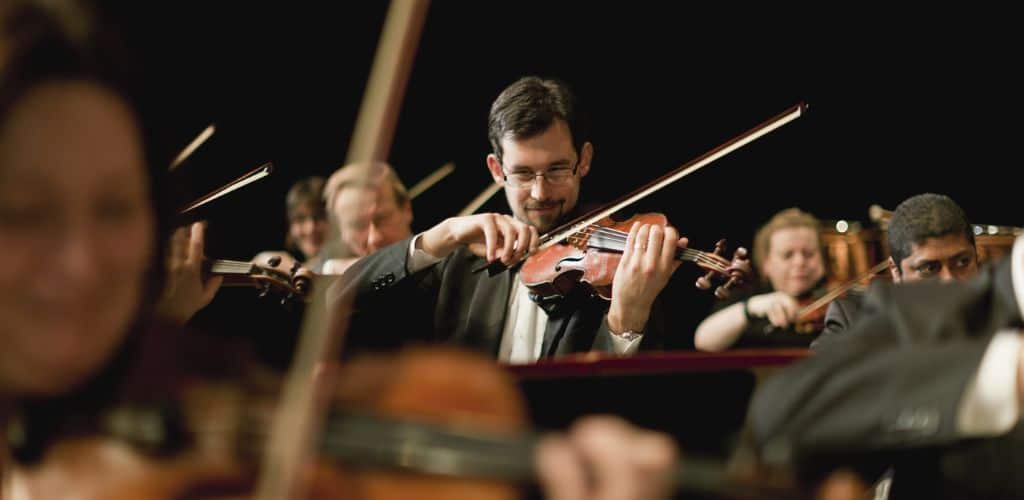
When I hear a violin soar above the orchestra, it’s often in the role of a soloist. Their bright tones and expressive capabilities make violins ideal for carrying the melody and captivating the audience.
In contrast, with their warm timbre, violas provide depth to the soloist’s flair, offering a rich accompaniment that enhances the piece’s emotional palette.
It’s beautiful to see these two different sounds played together, creating a heart-tugging masterpiece.
Sectional Harmony

On the other hand, cellos and double basses are like the roots of a symphony, anchoring the harmony with their resonant voices.
In harmony parts, each stringed instrument plays chords or melodic fragments that weave together, creating a lush backdrop that gives the melody that extra boost to shine even more!
The beauty of symphonies lies within this sectional interplay, where my ears can pick out the harmonious teamwork of strings.
Rhythmic and Melodic Support
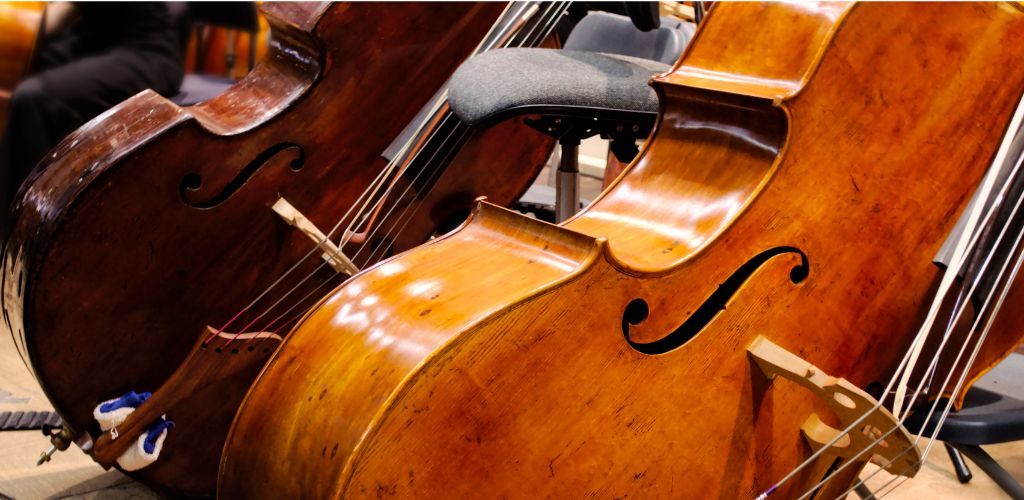
Beyond harmony, rhythm is a pulsing force in orchestral music, and stringed instruments shine in their supportive role.
Cellos might underscore the rhythm with a pizzicato touch, plucking notes that make my toes tap.
Meanwhile, the double bass provides foundational rhythmic undercurrents that can be felt and heard, giving a piece its steady heartbeat.
Playing Techniques and Sounds
In my years as a string instrument player, I have seen that the diverse techniques we use contribute greatly to the artistry and expression of the orchestral piece we play.
Let me give you an idea of what I’m talking about.
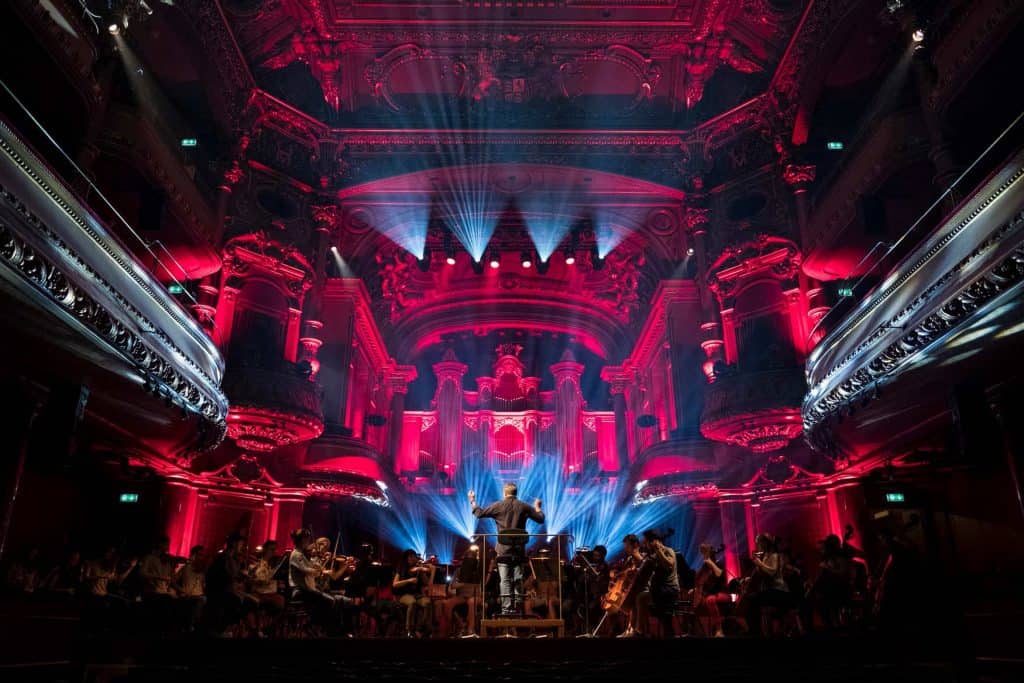
Bowing and Pizzicato
When I draw my bow across the strings, a smooth, sustained sound fills the air, resulting from the horsehair rubbing against the strings and setting them into vibration.
Bowing can vary in speed and pressure, creating a dynamic range of tone and expressiveness.
Conversely, plucking the strings with my fingers—a technique known as pizzicato—produces a short, percussive sound that’s delightfully distinct from bowing.
This technique can feature in a solo to brighten the texture or add rhythmic clarity.
Extended Techniques
Now, let’s talk about the road less traveled.
When I delve into extended techniques, I tap into an experimental soundscape. With harmonics and a light fingertip touch on certain points along the string, I can create ethereal, flute-like tones.
Or, when I feel bold, I might use double stopping, playing two notes simultaneously, which demands precise finger placement and can bring a lush, layered richness to the music.
Dynamics and Expression
Dynamics are the peaks and valleys of my musical expression, governed by how forcefully I play.
For instance, a sweeping forte passage can surge with power, while a delicate pianissimo section can whisper with intimacy.
Expression is all about the feeling I pour into the music; it’s the difference between simply playing notes and telling a story.
Through multiple dynamics, I not only control volume but also shade the music with emotion, allowing each piece to sing truly.
Historical Significance and Development
Within the grand tapestry of music, string instruments in the orchestra have woven a rich history and undergone remarkable evolution.
Let me now briefly educate you on the history of string instruments. Relax, this won’t be like one of your history classes!
Evolution of String Instruments
The journey of string instruments through history is as enchanting as the melodies they create.
Originating in ancient Greece, these instruments have come a long way from their first forms. They were crafted from wood and gut, and their simplicity speaks to their times.
In Italy, the violin began to take shape during the Renaissance, leading the charge in design sophistication.
Transitioning through the Baroque and Classical periods, instruments like violins and cellos underwent significant refinements. Their bridges, essential for sound transmission, were perfected to enhance tonal richness and project the artist’s emotion.

My admiration only grows as I imagine the skilled hands adapting these instruments to meet each musical era’s changing tastes and technical demands.
Influence on Music Genres
String instruments have been the heartthrobs of countless music genres, serenading us through time.
Western classical music is a hugely important pillar in their history, where strings have painted vivid auditory landscapes. These instruments became pivotal in orchestras, making more exciting symphonies with their dynamic expressions.
But their charm didn’t stop there; they slipped effortlessly into folk music. With each bow stroke, they narrated stories of cultural identity and tradition, proving their versatility.
As time progressed, string instruments embraced pop music, adding a layer of sophistication or plaintive emotion to songs.
Their gentle yet powerful presence in modern genres emphasizes their timeless appeal and adaptability.
Their amazing journey twists and turns through every chapter of music history, showcasing their importance in the musical world.
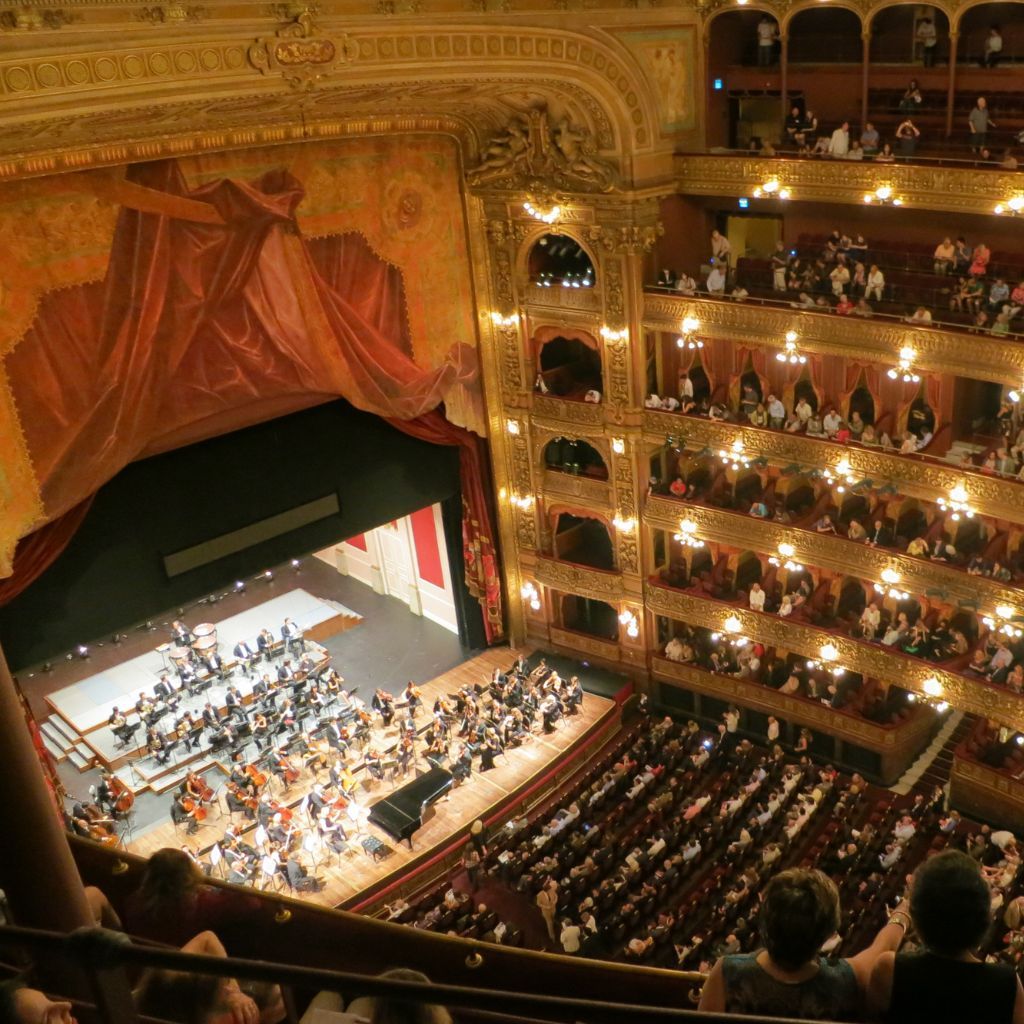
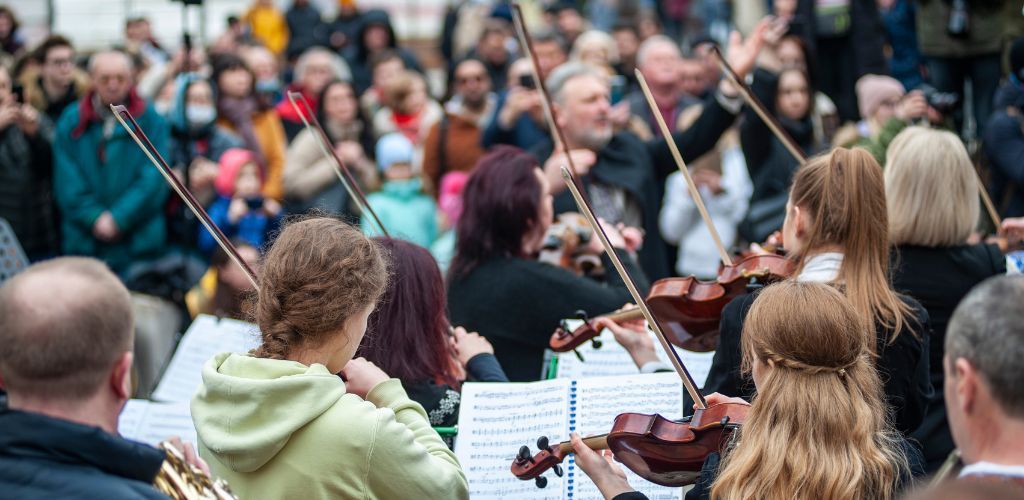
Famous Composers and Works
My heart swells with pride and awe when I recount the maestros who have discovered the expressive potential of string instruments.
Vivaldi, with “The Four Seasons,” showcased the violin in its full glory, while Bach’s “Brandenburg Concertos” celebrated the ensemble’s versatility.
These works are milestones, marking the development and prowess of string instruments within Western classical music.
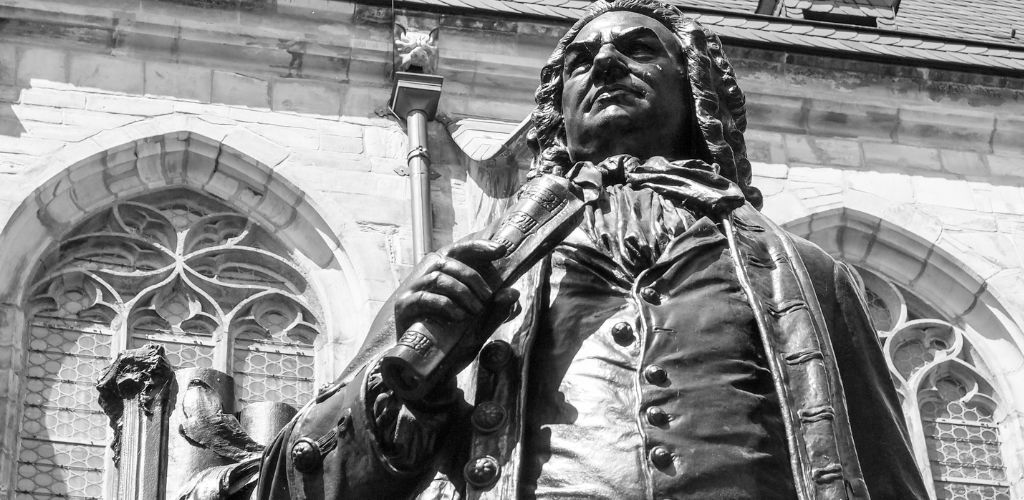
In the romantic hands of composers like Tchaikovsky and Dvorak, string instruments expressed the deepest human emotions. Their concertos and quartets are like love letters, using the strings’ capability to convey hard-to-express emotions.
Each note crafted by these great minds is a testament to the string family’s enduring legacy in the timetable of music history.
Their contribution is a treasure that I, and many others, will always hold dear.
String Instruments in an Orchestra:
A Recap!
I love letting people know about the string section; it’s the heart of the orchestra’s rich sound.
Violins, violas, cellos, and double basses all work together so harmoniously!
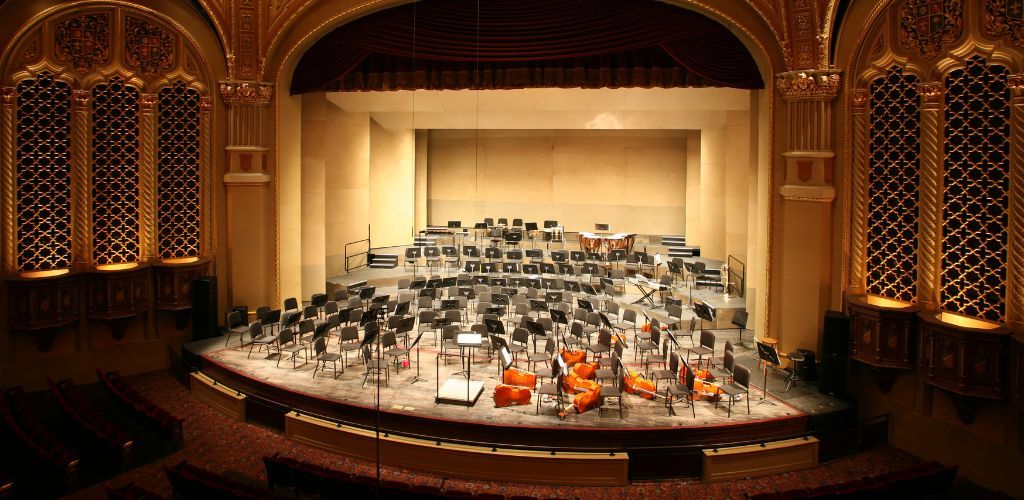
In most orchestras, violins are divided into two groups: the first violins and the second violins.
The first violins often play the melody, while the second violins complement them.
The viola is slightly larger than the violin and has a richer sound.
Violas fill the middle range, mingling with the violins and cellos beautifully.
The cellos, let me tell you, add depth with their warm and soulful tones.
The cellist sits right behind the violins and violas, secretly pulling the heartstrings of listeners with their melodies and harmonies.
We can’t forget the mighty double bass. Imagine those bass lines rumbling like thunder — that’s the double bass for you.
It’s the largest instrument in the string family, and its deep, powerful notes are the foundation of the orchestra’s sound.
I’ve always found string sections mesmerizing, and oh, what a joy to play one of them. They really can evoke every emotion, from joy to sorrow.
And let’s not forget, the unity in these sections makes orchestral music so captivating!
Before you go…
If you’re starting to think about whether or not you should start learning to play a string instrument, or perhaps you already want to play one but can’t decide on what instrument to focus on, this next article is perfect for you! Read it, and you will discover which string instrument is meant for you!
FAQ's
The orchestra instruments in orchestras typically feature a quintet of string instruments, including the violin, viola, cello, double bass, and harp. These instruments form the backbone of the orchestral sound, with the violin often divided into two sections, first and second violins, to enrich the texture of the musical arrangement.
An orchestra commonly includes six string instruments: the violin, viola, cello, double bass, harp, and occasionally the guitar. The the violin and viola is frequently divided into first and second sections for a fuller sound. At the same time, the guitar is less traditional but can add a unique timbre when included in orchestral compositions.
The four primary string instruments that form the essential member of the string- section of an orchestra are the violin, viola, cello, and double bass. Each instrument plays a crucial role, with violins often carrying the melody, violas adding depth, cellos providing warmth and texture, and double basses grounding the ensemble with their lower registers.
Six-string instruments refer to musical instruments typically with six strings, such as the guitar, widely used across many music genres, and the lute, prominent in Renaissance and Baroque music. Other stringed instruments include the vihuela, certain banjos, the balalaika, and the six-string electric bass, each offering distinct sounds and playing techniques.
A typical symphony orchestra generally has two violin sections, the first and second violins, with the first violins often playing the melody and the second violins performing harmonies or counter-melodies. The number of violins in each section can vary. Still, typically, there are between 16 and 30 more violins in total, with the first violins usually having a slightly larger number of players than the second.











i always wondered how composers decide which string instrument gets the lead in a piece. is it about the feeling they wanna convey or is there more technical stuff involved? anyone knows? this article got me thinking big time about how I’m gonna use string instruments in my own compositions someday.
I appreciate the segment on harps within the orchestra, though I’d argue their role is even more versatile than depicted. Harps can provide more than just a harmonic foundation; they often carry significant thematic material. It’s a common misunderstanding to undervalue their contribution.
Double basses never get enough credit, glad to see some recognition here haha. They’re the backbone of the string section imo
Couldn’t agree more, bassline_benny! Every string instrument brings something unique to the orchestra.
Absolutely loved reading about the different strings in the orchestra! It’s fascinating to see how each instrument contributes to the overall sound. Makes me appreciate my violin practice even more. Thanks, Robert Emery, for the insightful article!